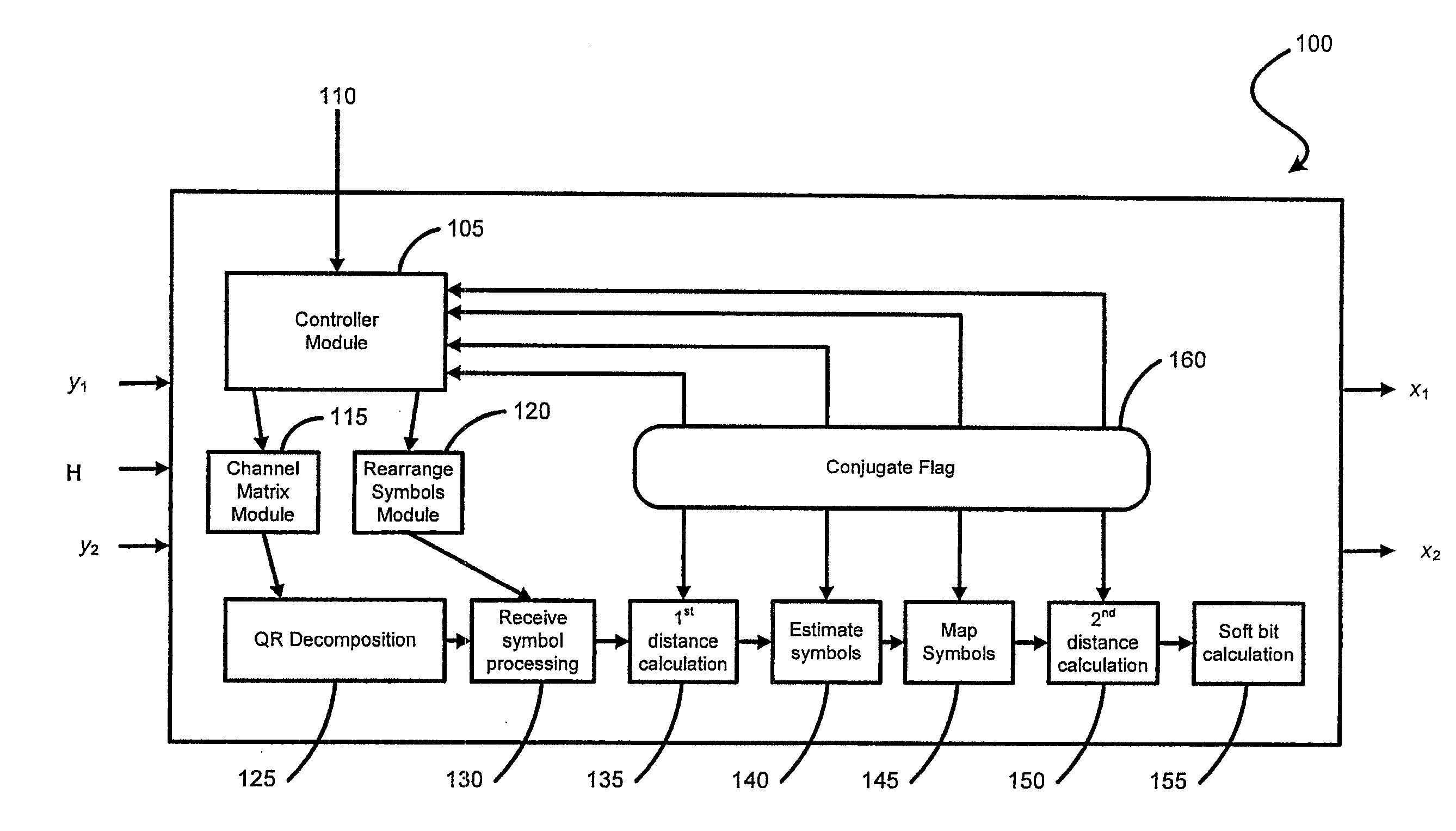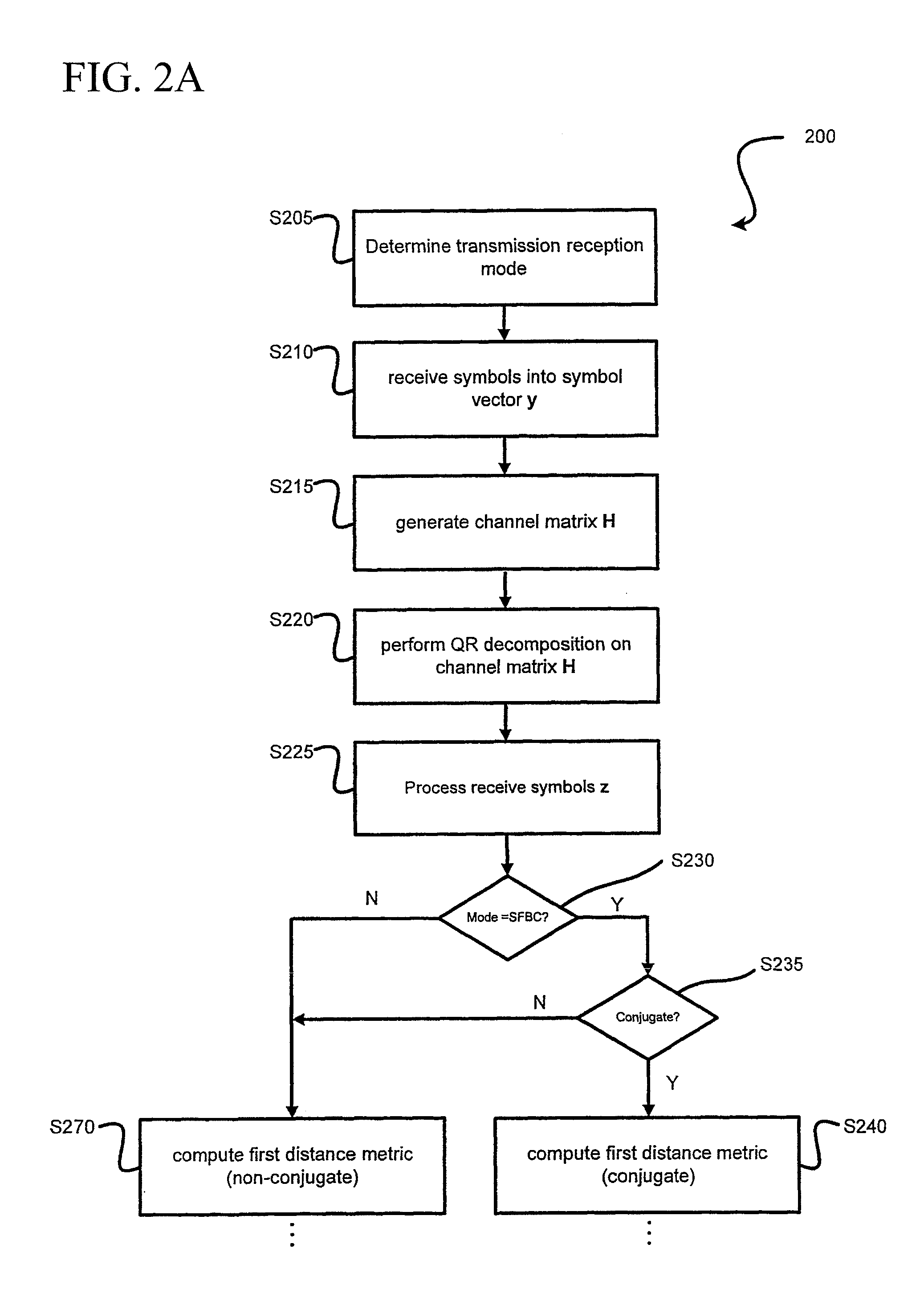Method for qr-mld demodulation
- Summary
- Abstract
- Description
- Claims
- Application Information
AI Technical Summary
Benefits of technology
Problems solved by technology
Method used
Image
Examples
Embodiment Construction
[0041]Referring now to FIG. 1, there is shown a QR-MLD demodulator 100 which has a number of inputs including received data I / Q on a first receiver y1 and a second receiver y2, a channel matrix H for channel estimation, a mode 110 associated with the each of the received data on first receiver y1 and second receiver y2. The QR-MLD demodulator 100 has a number of modules within it so as to provide an output of demodulated soft bits on two output streams x1 and x2.
[0042]The modules within the QR-MLD demodulator 100 include a controller module 105 which determines the transmission reception mode from the received data on first receiver y1 and second receiver y2 as being one of SISO, SIMO, MIMO or SFBC. The controller module 105 does this by taking the input from the mode 110 associated with the received data on first receiver y1 and second receiver y2. Once the mode 110 is determined, the controller module 105 passes control to the channel matrix module 115 and rearrange symbol module ...
PUM
 Login to View More
Login to View More Abstract
Description
Claims
Application Information
 Login to View More
Login to View More - R&D
- Intellectual Property
- Life Sciences
- Materials
- Tech Scout
- Unparalleled Data Quality
- Higher Quality Content
- 60% Fewer Hallucinations
Browse by: Latest US Patents, China's latest patents, Technical Efficacy Thesaurus, Application Domain, Technology Topic, Popular Technical Reports.
© 2025 PatSnap. All rights reserved.Legal|Privacy policy|Modern Slavery Act Transparency Statement|Sitemap|About US| Contact US: help@patsnap.com



